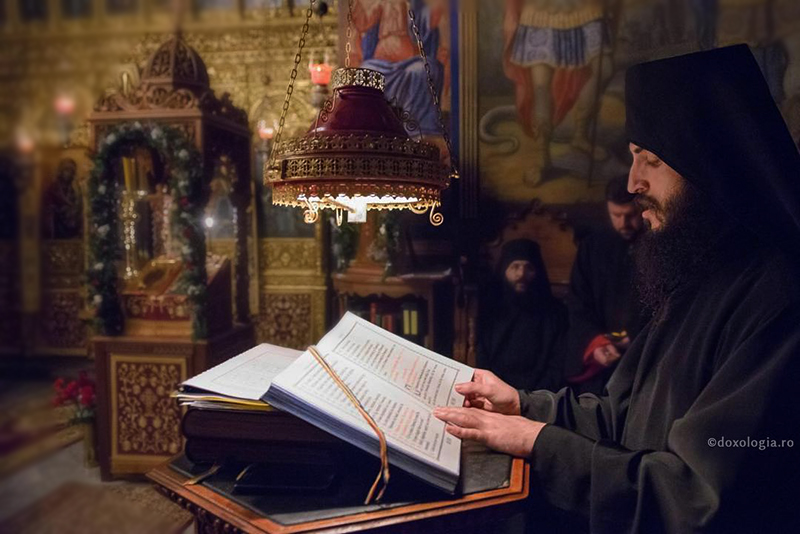
There is an unusual and incomprehensible word Antitype in the Eucharistic theology (Greek: ἀντίτυπα – instead of the image), used in relation to the Eucharistic bread and wine that have not yet been consecrated. We encounter this term of Orthodox Sacramentology both in Scripture and in the writings of the Fathers, and also at the Liturgy. Notably, this term is used in the Epiclesis of St. Basil the Great’s anaphora. What does this word mean and how is it interpreted by Orthodox theologians?
First mentions
The word ἀντίτυπα was not used in Ancient Greek literature as a specific term, but was used in the meaning of “resisting”, “opposing”. For the first time it is used as such by the Gnostics, as evidenced by Plotinus, who denounced the Gnostics for departing from the classical language of Greek philosophers and using such new words as ἀντίτυποι (Plot. Enn. 2. 9. 6). There are only two occurrences of this word in the New Testament. Peter uses a phrase with this word in 1 Peter 3:21 when describing how Noah and his family were rescued in the Ark from the Flood, which is the prototype of Baptism (ἀντίτυπον βάπτισμα). The second mention of this term is found in Hebrews 9:24, where the Temple of Jerusalem is considered ἀντίτυπα (modeled copy) of the heavenly sanctuary.
Fathers and Church Writers
The term “antitype” appears in the works of the Holy Fathers and in the context of the Eucharist for the first time in the third century in the writings of St. Irenaeus of Lyon (Iren. Fragm. Gr. 36), as well as in the liturgical and canonical text The Apostolic Tradition (Ch. 21). This term remained in wide use until the fifth century as the Orthodox teaching of the Eucharist developed. It is used by such Fathers as Gregory the Theologian and Cyril of Jerusalem. This word is also used in the Apostolic Constitutions (Const. Ap. VII, 25. 4). In the West, the Latin words figura and similitudo (Tertull. Adv. Marcion. 4. 40. 3) served as equivalents of the Greek word ἀντίτυπα. All of this is understandable but it would seem that there is no difference what theological term the Holy Fathers used to describe the greatest Sacrament of the Eucharist? The problem arose due to the fact that, using the term “antitype”, which had become traditional and suggested some symbolism, the Fathers in no way denied the reality and presence of the real Body and Blood of Christ in the Eucharistic Gifts. For instance, Tertullian already argued for the truth of God’s incarnation pointing at the actual presence of the Body and Blood of Jesus in the Holy Gifts (Tertull. Adv. Marcion. 4. 40. 3). Most of the Holy Fathers of the 3rd-6th centuries readily used the term “antitype” while adhering to Eucharistic realism. Subsequently, this word was compromised by false interpretations. As early as in the Memorable Stories of the Asceticism of the Holy and Blessed Fathers (a hagiographical text from the 4th-6th centuries on the life and teachings of Egyptian hermits), there is a description of the miracle of teaching one elder who did not believe in the real presence of the Body of Christ in the Holy Gifts, because he thought that they were only “antitype” (Apophthegmata Patrum. Abba Daniel. 7 // PG. 65. Col. 157).
Iconoclasts and the Orthodox Reaction
Iconoclasts began to actively appeal to the term “antitype”, denying the veneration of icons and claiming that only the Eucharist can be considered a real icon (image) of Christ (Gero S.). The Eucharistic Doctrine of the Byzantine Iconoclasts and its Sources // BZ. 1975. Bd. 68. S. 4-22). During the controversy with iconoclasts led by the great theologian of the Church, St. John of Damascus, the Holy Father had to pay special attention to this term when presenting the Orthodox doctrine of the Eucharist. The saint claimed that “bread and wine are not the image of the Body and Blood of Christ, but the Body of the Lord itself.” Analyzing the Liturgy of Saint Basil, the Holy Father writes that the Holy Gifts are called “antitype” only until their consecration (Ioan. Damasc. De fide orth. 4. 13; cf.: De azymis). By this statement St. John removed the ambiguity from the term, but it also remains true that the Fathers of the third and fourth centuries applied the term “antitype” also to the already consecrated Holy Gifts, such as St. Cyril of Jerusalem. The position of St. John Damascene was fully accepted by the Fathers of the Seventh Ecumenical Council and was shared by Late Byzantine exegetes, in particular by St. Theophylact of Ohrid. A similar process of rejection of figurative terminology in relation to the Holy Gifts took place in the Western Church, where in the course of the debate on the real presence of Christ in the Eucharist in the 9th through 11th centuries, the notion of “figura” was opposed to the notion of “truth” (veritas).
At present, Orthodox theologians have several interpretations of the use of this term by early Fathers. According to one of them, the Fathers always believed that the ancient Old Testament sacrifices had been “images”, “signs” of the Eucharistic Sacrament. Since they are called images, the Body and Blood of Christ at the Liturgy, being not an image but a reality, are called “replacement of images”. We see the development and clarification of Orthodox Sacramentology in the example of the term “antitype”. It does not throw away the legacy of the early Church, but gives it a proper interpretation in accordance with its teaching.



